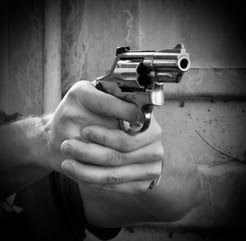Editor’s Note: Today’s feature first appeared in our companion service, The Tactical Wire.
 |
Students come to Shootrite for answers. They’re looking for the proper techniques to use their firearms in defense against a violent attack. One becomes a student, acquiring instruction from those with more knowledge, in order to learn. But I explain to everyone at some point in the class, ideally this instruction should actually create questions.
Instruction begins with learning how to use the “tools.” This is a good thing, because the skills needed to safely and efficiently work with a firearm are not instinctive. Ninety-five percent of what’s required is only acquired through instruction – introduction of the proper skills – and repetition, which is when the real learning occurs. It’s all about properly –safely and efficiently – using your hardware.
After learning the fundamentals of gun handling the focus shifts to defensive use of the weapon. The four-step draw is done from concealment. The fundamentals of marksmanship are applied defensively, to the appropriate areas of the body. Manipulation of the weapon includes reloading and clearing stoppages. The principles and techniques for movement, communication, and the use of cover are described, demonstrated and drilled. We’re also starting to cultivate the appropriate mindset. This includes awareness, the key to avoidance and escape, and focus and control, all of which are mandatory for fighting. It’s also when Boyd’s O.O.D.A. Loop is introduced. Fighting is problem solving at high speed. Up to now, it’s pretty much me teaching, feeding them the appropriate information.
About this time, I start seeing cogs in the student’s brains begin to churn. “When I have the family with me,” they inquire, “how does all this apply?” They’re starting to work with the techniques and principles introduced in class and considering how these apply to their particular situations. Questions are being created.
The goal of defensive instruction is for students to discover defensive techniques and principles, but it’s critical to determine how to apply them in their lives. It’s about problem solving, developing the ability to assess and analyze a dangerous situation – hopefully in advance - then determine an appropriate course of action in a short period of time. It doesn’t matter how a special ops team might do it. That doesn’t apply to you and the family. It won’t make any difference that everyone, including your five-year-old prodigy knows how to use an AR. All the carbines are sitting at home in the safe. What do you have with you right now?
Your task is to take the principles and skills learned on the range – and through repetition – and determine how they apply to your life and team. You practice “emergency fire drills” with the younger kids so they know how to act during a crisis. Older team members participate too, as appropriate to age. There won’t time to acquire new skills in the fight, and it’s not the time or place to become “creative.” Your most valuable asset will be the heart and mind, and the questions you’ve already answered.
Tiger McKee is director of Shootrite Firearms Academy. He is the author of The Book of Two Guns, AR-15 Skills and Drills, has a regular column in American Handgunner and makes some cool knives and custom revolvers. Visit Shootrite’s Facebook page for other details.